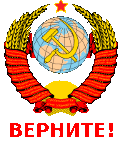Желательно без привязки к конкретному языку программирования, просто теория функционального программирования, и вообще хорошо если на русском.

Ответ на:
комментарий
от resurtm
Ответ на:
комментарий
от anonymous


Ответ на:
комментарий
от Sphinx
Ответ на:
комментарий
от anonymous
Ответ на:
комментарий
от anonymous

Ответ на:
комментарий
от Sphinx

Ответ на:
комментарий
от anonymous
Ответ на:
комментарий
от anonymous
Вы не можете добавлять комментарии в эту тему. Тема перемещена в архив.
Похожие темы
- Форум ФП (2006)
- Форум Книга по OO (2006)
- Форум [ФП] Алгоритмы (2009)
- Форум Посоветуйте хорошую книгу о linux (2006)
- Форум [самообразование] Книги (2008)
- Форум Книги по лямбда исчислению ? (2010)
- Форум Книга по SQL (2021)
- Форум вопрос по sicp (2014)
- Форум Требуется Специалист по функциональному программированию (2010)
- Форум Lisp Книга (2012)